Virtually everyone knows the story of Peter Parker and his thrilling adventures as Spider-Man. One of the most popular superheroes since his creation by Stan Lee and Steve Ditko in August 1962, Spider-Man has been identified as the most relatable for having to deal with everyday problems on top of having to contend with one of the best rogues’ gallery of villains in the medium. In fact, the character is considered such an every man that any one could see themselves underneath the mask.
Spider-Man: Into The Spider-Verse explores this concept and then some. At the center of the story is Miles Morales, an Afro-Latino American teenager in Brooklyn who is having trouble figuring who he is and what he wants to be. He understands how well meaning his parents are and he’s being afforded an incredible opportunity attending an elite boarding school. But he just doesn’t know if that is what he wants to do. He seems to have more in common with his Uncle Aaron, who has a strained relationship with Miles’ policeman father.
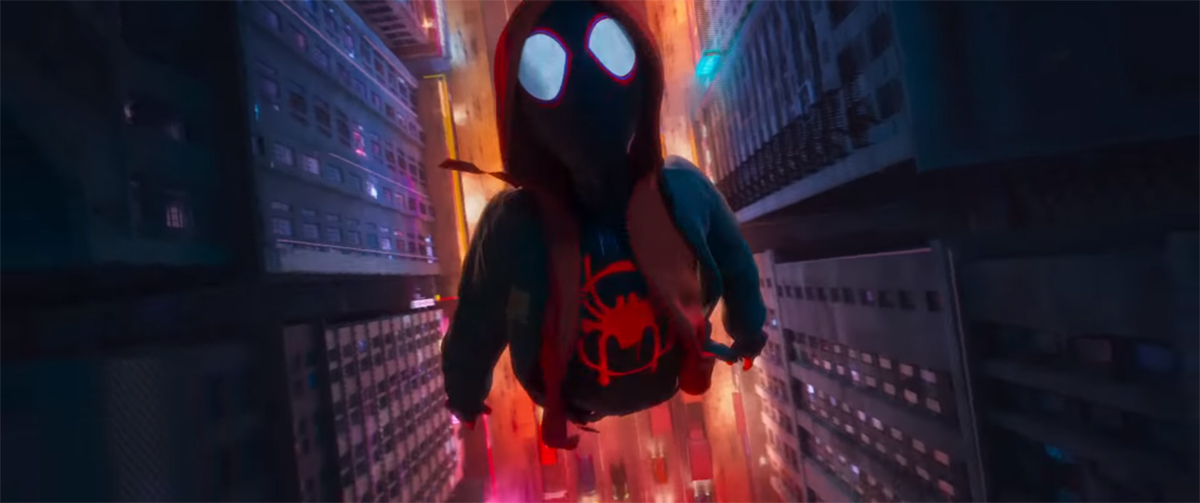
If Miles thought he was going nowhere in life, they certainly don’t get any better upon receiving a bite from a genetically modified spider. He is confused and at a complete loss at what’s happening to him when he then stumbles upon a secret laboratory run by the crime lord Wilson Fisk, better known as The Kingpin. Chaos ensues and just when things have gotten bad for Miles, it gets worse when he meets a Spider-Man from another dimension. And then another. And another.
The film loosely borrows elements of the Spider-Verse story that was published in the comic books in 2014 where various Spider-Men and Women from different dimensions are brought together to combat a threat to their lives. It is one that could easily create a complex and confusing narrative. Fortunately, writer/producer Phil Lord developed focus to the story by deviating from the core premise of the concept and concentrating on Miles’ origin as Spider-Man, as created by Brian Michael Bendis and Sara Pichelli in August 2011.
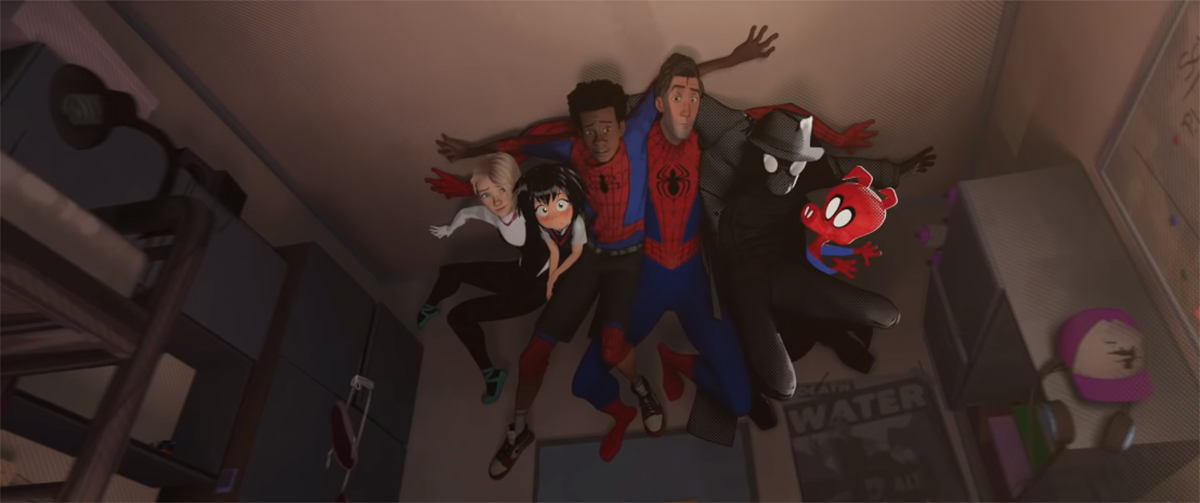
And what a fantastic, emotional story is told. It manages to create a wonderful spin on the character, his history, and, more importantly, how intimidating and overwhelming the mask can be to any one who wears it. Lord and director/writer Rodney Rothman do a fantastic job in making Miles such a sympathetic character that audiences can’t help but root for him all the way through. The same with making a disheveled and rather disillusioned Peter Parker that viewers want to see regain his spark. Nearly all of the primary characters are so well written and work so well with the overall narrative that it’s heart-warming.
To further enhance just how beloved the characters are is the top notch voice cast that’s been put together. Shameik Moore is excellent as Miles Morles, providing a voice that can be energetic and vulnerable. Jake Johnson does a fine job as Peter Parker, giving him a voice that’s a great mix of what we’ve historically identify to the character with how he is presented in the film. Hailee Steinfeld offers the right amount of spunk for Gwen Stacy, Nicolas Cage just manages to hit the right amount of over-the-top for his noir-inspired Spider-Man, and John Mulaney is great as Spider-Ham. A stand-out for me is Kathryn Hahn, who is pretty cool as a character whose identity I’ll leave for audiences to discover.
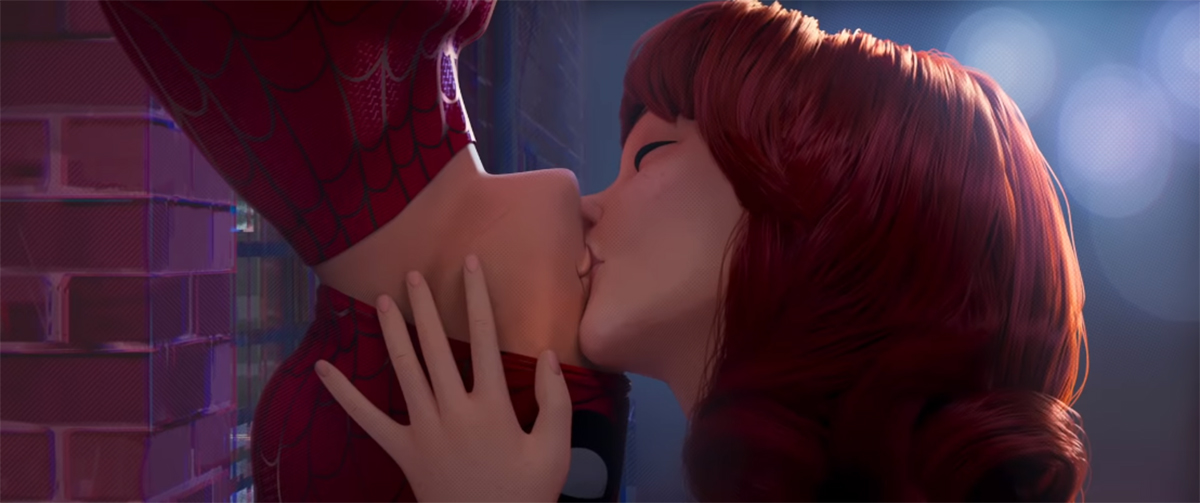
Now we come to the animation. Sony Pictures Animation and Sony Pictures Imageworks are to be commended for creating a visual look that is breathtaking and stunning without overwhelming the story. Everything just flows together while managing to incorporate a diverse range of styles from the classical approach with Peter Parker to the cartoony, Chuck Jones inspired design of Spider-Ham to the anime design of Peni Parker and her SP//dr mech suit. I rather like how the animation isn’t entirely smooth, being more in line with stop-motion than how computer-generated animation would run. It gives it that much more of a comic book appearnce than if everything ran as smoothly as in say a Disney and Pixar film.
The thing that really stands out with the look of the film is the vibrancy of the scenes and setting. Brooklyn is alive with a unique look that makes it more than just a city and New York as a whole is more colorful than ever before. I love when on occasion I’m able to catch Ben-Day dots used as part of the coloring of a scene, adding that graphic pop to make it look all the more like a comic book than any animation adaptation of the medium.
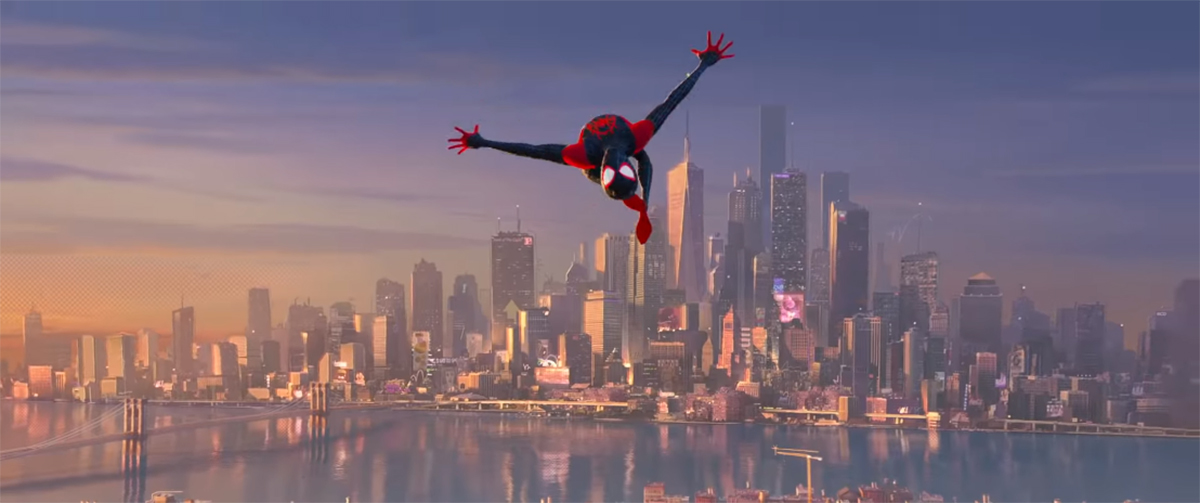
Whatever faults the film has I found them to be few and far between. I kind of had the impression that the villains were merely set pieces and not too threatening in the overall scheme of things. They’re still great set pieces, but they were more of obstacles for the heroes to overcome. And I did sometimes wish they explored Miles’ family a little more, such as a closer understanding of the strained relationship between his father and Uncle Aaron for audiences that aren’t familiar with the comic books.
Directors Bob Persichetti, Peter Ramsey, and Rothman have crafted together a wonderful film that is to be seen and experienced. It is a breath of fresh air with an excellent diverse set of characters to root for, visual look and design that is second to none, and a wonderful narrative with heart. Spider-Man: Into The Spider-Verse is one of, if not the best Spider-Man movie to date. And in a sea of animated features dominated by the excellence of Disney and Pixar along with the fan appeal of DreamWorks and Illumination, I don’t think it’s hard to believe that it could be seen as a game-changer in animation.
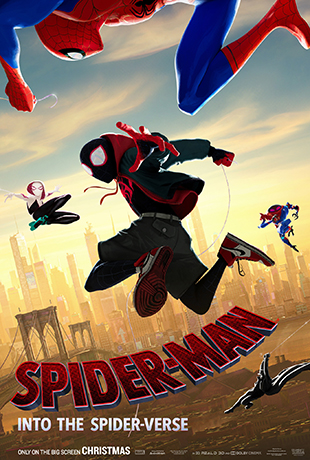 | Spider-Man: Into The Spider-Verse Sony Pictures Animation December 14, 2018 117 minutes Rated PG Directed by Bob Persichetti, Peter Ramsey, and Rodney Rothman | |









